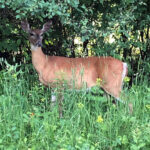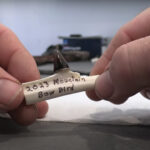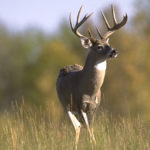The shot had felt good, the distance was only 25 yards, and the blood sign looked lethal when I found my arrow 20 yards down the cow elk’s flight path.
So why couldn’t I find any fresh sign after easily following the big girl’s 100-yard dash across the nearby meadow? The cow had stopped running when cresting the knoll where I now stood, and then slowly disappeared into the thick forest.
I tiptoed toward some orange-leafed oak brush where I last saw her, studying the ground and fallen leaves for fresh tracks and red droplets. I circled the thicket, moved 15 yards farther, and again searched left and right for 30 yards. Still nothing.
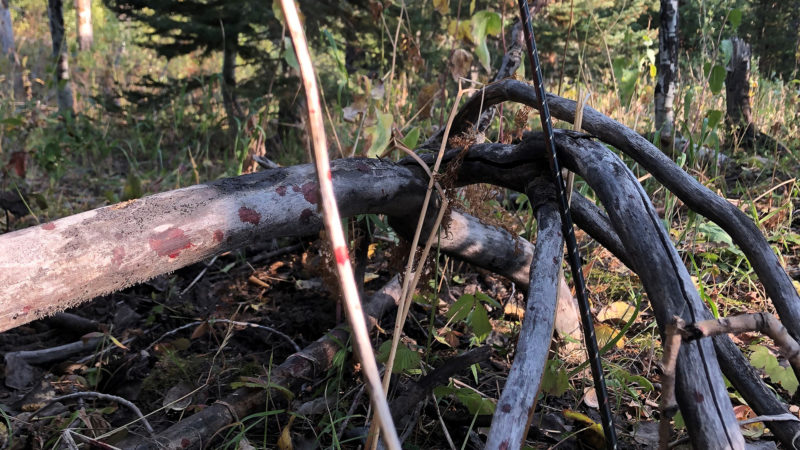
Hmm. Doubt and worry started nagging me, making me question if I had misinterpreted the promising sign on my arrow. I decided to regroup by retrieving my bow, backpack and jacket from the base of a Douglas fir where I last found blood. Then I resumed my grid search, reminding myself the elk couldn’t have flown off or applied a tourniquet.
This was Sept. 17, the 13th and final full day of my annual elk bowhunt in Idaho. The day had begun like all the others preceding it. My alarm clock had sounded at 3:30 a.m., and by 4:30 a.m. I was pushing up the steep mountainside from my campsite in the Caribou-Targhee National Forest. The hunting had been slow and the bull elk more quiet than usual, seldom bugling, “chuckling” or bellowing nearby or far away.
In fact, I didn’t see one elk the first five days of my hunt. Not until the drizzly, foggy Saturday morning of Sept. 11 did I finally hear twigs snapping near my treestand at the meadow’s edge, and see a 5-point bull riding herd on three cows and two calves. I pulled my bow to full draw, only to see the bull stop short of an opening in the brush to monitor its small harem feeding in the meadow.
I kept holding my bow at full draw, expecting the bull to step clear of the brush any second. Instead, it stood like a statue watching its small herd feeding. After 20 seconds I lowered my bow arm about a foot and rested the bow’s lower limb and cam on my left knee to reduce some muscle strain.
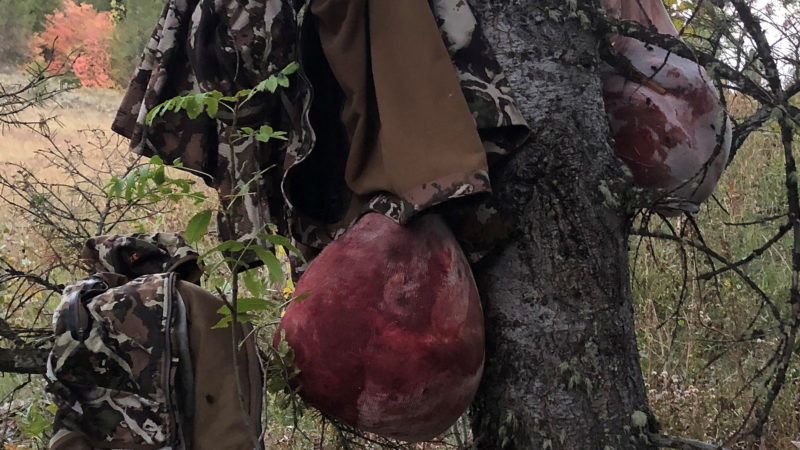
I was convinced the bull would instantly take a few steps and make itself vulnerable if I let down the bowstring. Finally, about a minute into the standoff, I carefully let down from full draw while the bull shook itself like a Labrador retriever, ridding its thick hide of mud and rainwater it had picked up overnight.
The bull stepped out soon after, but I had no shot when I again pulled my bow to full draw. The bull trotted into the meadow and was suddenly 40 yards away and then 45 and 50. My bow arm was shaking and trembling involuntarily, making it impossible to settle my sight-pin on the bull’s vitals. I let down from full draw, conceding I lacked the strength to make a well-placed shot.
I didn’t see another elk until five days later. At dawn on Sept. 16 I heard twigs snapping 60 yards uphill from my treestand, and saw an adult elk crossing the brushy hillside. I saw its head for a second but couldn’t see if it carried antlers. It ignored my cow calls and disappeared from sight. My heart rate soon plummeted to normal.
I calculated my odds of success were 4% when climbing back into my treestand before dawn the next day. That was my 13th day on the mountain and my 24th sit for elk. Most Western bowhunters would rather poke themselves in the neck with dull broadheads than sit in a treestand day after day, alternating 5-hour shifts each morning and 4-hour sits before dusk. Still, I felt confident in that spot and believed it provided better chances for me than cruising and calling.
As daylight spread across the meadow and into the aspens where I waited, I stood up, telling myself, “Time to hunt.” Would I see an elk two straight days for the first time this trip? Seconds later I heard a soft “snap” as a twig broke about the same place where the elk walked the previous dawn.
I pulled my bow from its hanger, snapped my wrist-strap release to the bowstring, and faced the sound’s direction while moving my left leg forward a half-step. The woods uphill turned silent for a minute and then I heard something in the brush slightly uphill to my left.
An elk! A large female moved cautiously downhill 20 yards away. When it walked behind a small fir I started drawing my bow, but the cow stopped and looked my way. Had it heard me trying to draw, or saw me move as I pulled on the bowstring? I started drawing again when the elk resumed walking.
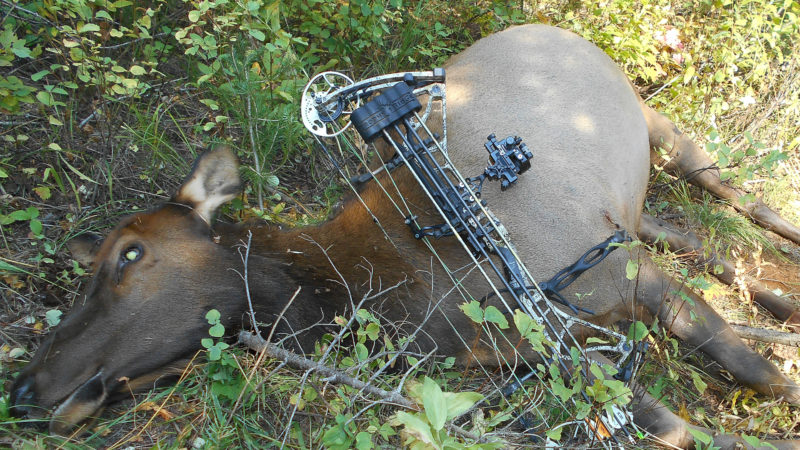
Now I was in a cramped, awkward position and couldn’t pull my bow to full draw. When the cow passed behind a fat fir tree I sneaked the bow past the aspen’s trunk that held my stand, and pulled the bowstring again. This time I easily brought the string to the corner of my right lip, placed the sight-pin behind the cow’s right shoulder, and released my arrow with its 4-blade broadhead.
The impact sounded solid in the gray light, and the fleeing cow spun to the northeast before bulldozing its way across the meadow. I expected it to topple dead any second, but it defied my assumption. My heart sank when it slowed, stopped, looked around, and then walked away. Was it my imagination, or had it turned downhill and held its head lower than normal before disappearing?
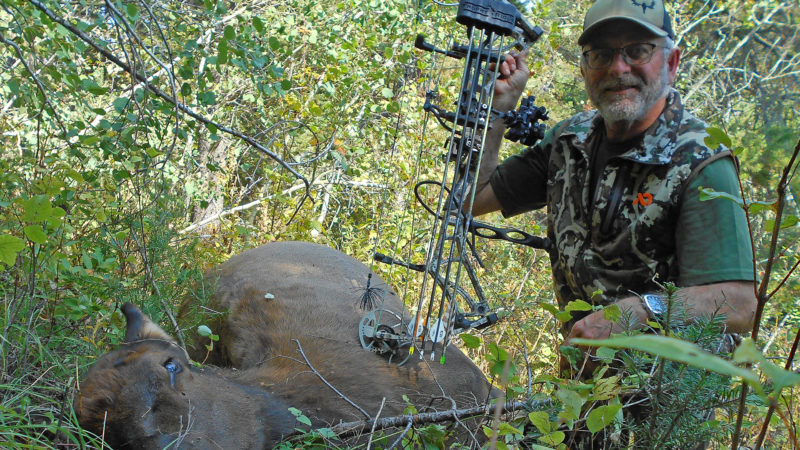
I replayed those sights after regrouping, and resumed my tracking efforts after strapping on my backpack and retrieving my bow. Just as I began scanning the leaves for signs of my elk, I looked down the slope where the meadow merges into young aspens and midsize firs. Then I saw it: a tannish brown hump of an elk’s midsection lying still 30 yards away!
I pumped my fist and walked over to admire my elk. The arrow had entered its liver on one side and passed through beneath its heart on the opposite side, an ideal quartering-away hit. Clearly, it had died soon after disappearing into the cover.
Maybe I shouldn’t have had any doubts, but elk are big, tough animals that routinely thwart better bowhunters than me.

 By
By 
